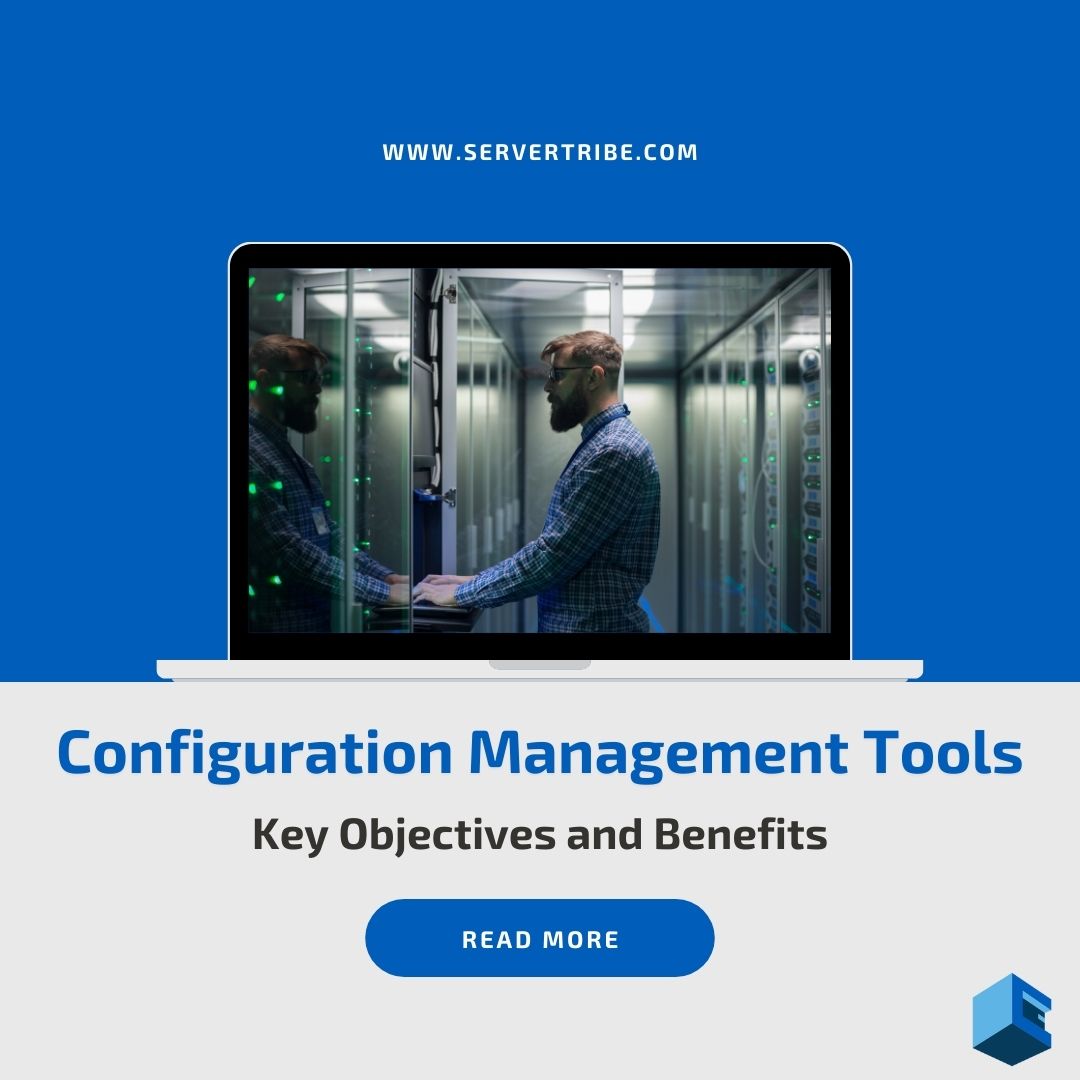Top 5 Configuration Management Tools: Key Objectives and Benefits
Written by
Shivam Mahajan on the 07th Feb 2024
The software development industry moves quickly; hence, maintaining organisation and consistency across many configurations is essential. This is where the usefulness of configuration management tools comes in. They function as helpful assistants, automating and tidying up all of the critical settings and configurations required for seamless software deployment. In this post, we’ll look at why these tools are so useful, what they can accomplish, and which ones are popular among the community.
What is Configuration Management?
To put it simply, configuration management is the systematic management of a system’s components, ensuring that they all work together smoothly and consistently regardless of the platform on which they are deployed. This is essential to avoid “configuration drift,” which is a situation when things start to go wrong and result in issues such as bugs or deployment challenges. Configuration management keeps everything under control, ensuring that your system runs smoothly, eliminating hassles, and making life easier for everyone involved.
Key Objectives of Configuration Management
Consistency: Consistency guarantees that software configurations are similar throughout several environments, such as development, testing, and production. It entails establishing settings, dependencies, and configurations to provide consistent behaviour independent of the deployment environment. This uniformity reduces the possibility of unforeseen errors originating from changes between environments, improving the software’s dependability and stability throughout its lifespan.
Efficiency: Configuration management strives to improve efficiency by automating repetitive operations, which not only saves time but also reduces the possibility of mistakes caused by human supervision during configuration changes. By automating these operations, teams may streamline their workflows and concentrate on higher-value activities, increasing overall productivity and dependability.
Traceability: Another key goal of configuration management is to keep detailed records of all configuration changes. This traceability enables simple tracking and auditing, facilitating regulatory compliance, and simplifying troubleshooting when errors emerge. Keeping a precise history of configuration changes allows teams to rapidly identify the source of problems and adopt appropriate remedial steps, boosting system stability and dependability.
Collaboration: Configuration management promotes smooth cooperation among the many teams engaged in the software lifecycle, such as development, operations, and stakeholders. By offering a centralised platform for maintaining settings and organising updates, everyone is aligned and informed throughout the process.
Common Challenges Without Configuration Management
Manual Errors: When configuration operations rely on manual interaction, the chance of error grows considerably. Because of this dependency, there is a greater chance that human error or oversight may result in differences between environments, which might cause operational problems and lower system dependability.
Scalability Issues: As software projects grow in complexity and size, manually maintaining settings becomes increasingly unfeasible. The manual technique fails to keep up with the increasing complexities and demands, resulting in inefficiencies, delays, and an increased risk of mistakes.
Version Control: Without effective version control methods, monitoring and managing configuration changes becomes a demanding undertaking. Without comprehensive documentation and monitoring of version history, teams may struggle to determine when and why certain changes were performed, hampered by debugging efforts and complicated rollback processes.
Dependency Management: In the absence of an automated method, maintaining dependencies across various system components might get more difficult. Manual dependency management is prone to mistakes and inconsistencies, which can lead to compatibility difficulties, runtime errors, and deployment failures.
Popular Configuration Management Tools
What makes Ansible unique is its emphasis on simplicity and user-friendliness. It uses declarative language to describe system configurations, making them simple for users to comprehend and operate with. Ansible’s adaptability allows it to control various systems, making it a popular choice for businesses looking for simple automation solutions.
Chef is an advanced automation software noted for its extensive features. It defines system settings using a Ruby-based DSL (Domain-Specific Language), which allows for a flexible and expressive manner to indicate how various components should be configured and handled. Chef’s “recipe” style provides an organised approach to configuration management, which appeals to users without coding skills and complicated infrastructure requirements.
Puppet is well known for its scalability and centralised management capabilities. It uses declarative language to design system setups, allowing users to express desired states rather than procedural ones. Puppets’ ability to efficiently manage massive infrastructures makes it a popular choice for organisations managing complicated systems.
SaltStack, or Salt, separates itself with its master-agent design, which provides speed and scalability to configuration management operations. It uses YAML as its configuration language, which provides a human-readable way to define setups. SaltStack’s performance-focused approach makes it ideal for managing large-scale installations and real-time configuration modifications.
Attune provides complete IT automation and orchestration capabilities, going beyond traditional configuration management technologies. It excels at precisely automating scripts, tasks, and processes, while also supporting common scripting languages for flexibility and ease of use.
Benefits of Configuration Management Tools
Automation: Configuration management technologies handle repetitive processes such as setup and updates automatically, reducing the chance of human mistakes and saving critical time.
Consistency: They guarantee that configurations stay consistent across varied contexts, lowering the chance of deployment issues caused by variances across systems.
Scalability: These solutions can easily manage configurations for big and complex systems, seamlessly responding to the changing demands of software projects without losing performance or dependability.
Version Control: Configuration management technologies provide strong versioning capabilities, allowing teams to monitor changes, revert to earlier configurations as needed, and keep a clear audit record of all system configuration changes across time.
Conclusion
Configuration management technologies are crucial in today’s software development industry. They automate tasks and keep things constant when your projects and settings change. Whether you use Ansible, Chef, Puppet, Attune, SaltStack, or another favourite, choosing the right tool can make all the difference. It’s all about optimising your operations and ensuring that your systems are properly configured, user-friendly, and adaptable to your changing demands. So, by adopting these technologies, organisations can stay on top of their game, ensuring that their software runs smoothly and adapts effortlessly to whatever comes their way.
Post Written by Shivam Mahajan
Shivam Mahajan is an editor skilled in SysOps, Tech, and Cloud. With experience at AttuneOps and other companies, he simplifies complex technical material for easy understanding.



Comments